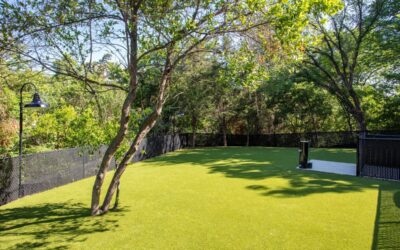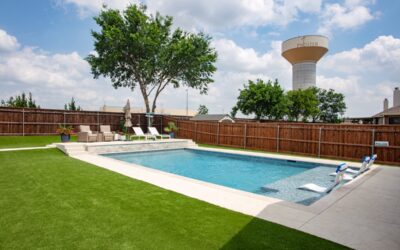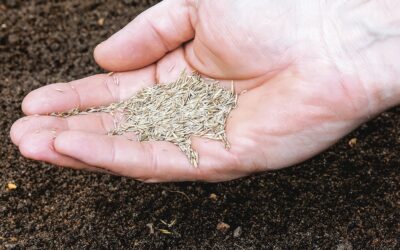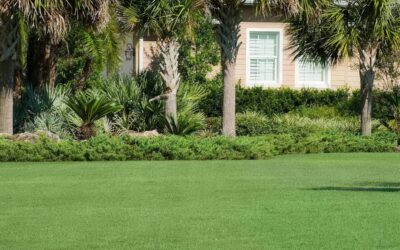You can only decide if artificial grass is worth the money if you can first answer these questions:
- How much do you enjoy working on your lawn/garden?
- How much do you spend on lawn services and maintaining your lawn every year?
- How concerned are you by water shortages?
- How long will your artificial grass last?
If you hate mowing the lawn, spend a few thousand dollars on lawn services and water every year to keep it looking beautiful and you’re considering replacing it with an artificial grass lawn that you expect to last 20 years, it’s hard to argue with the value it will bring.
If, however, you love cranking up the mower and fertilizing, aerating and watering your lawn, you might be reluctant to pay the higher installation costs of artificial turf even if there are water shortages in your area.
Many homeowners in the Dallas-Fort Worth area consider the water-saving benefits of artificial grass alone will justify the costs.
But let’s go into this deeper and weigh up the true value of artificial turf compared with natural grass. We cover the following:
The cost of artificial grass vs real grass

Let’s cut to the chase:
Artificial grass is considerably more expensive to install but saves money every year thereafter.
Most of the costs of real grass costs come later with considerably higher maintenance costs.
Installation costs
For fully installed artificial grass, the national average is $9-12 per square foot but that does depend on many factors that we go into below.
Real grass installation costs $1-2 per square foot, so there’s no argument that it’s much cheaper to install.
If a 1,000-square-foot artificial lawn costs $10,000 to install, the same area will cost just $1,000-$2,000 in natural grass.
But the cost of ownership of the two lawns reveals a lot more about the true costs…
Cost of ownership
Did you know that the average American spends almost 72 hours a year on lawn maintenance?
The time and money that go into maintaining a real grass lawn are considerable, whichever way you cut it. That’s an important consideration when you weigh up whether artificial grass is worth the money.
With artificial grass, the main benefits come after installation in the years of low maintenance, low costs and high durability.
If you revisit two equal-size lawns in the DFW area — one made of real grass and one made of artificial grass — five years after installation, it is highly likely that:
- The artificial lawn will look as good as the day it was laid — with minimal effort.
- The real grass lawn may look as good as when it was laid — but only with considerable effort.
- The artificial lawn will have paid back its higher installation costs within around five years of cost-savings compared to the real grass lawn.
- The artificial grass will continue to save money in the years after it’s installed (for 20 years or more) while the real grass lawn will continue to rise in cost of ownership (with projected water price increases).
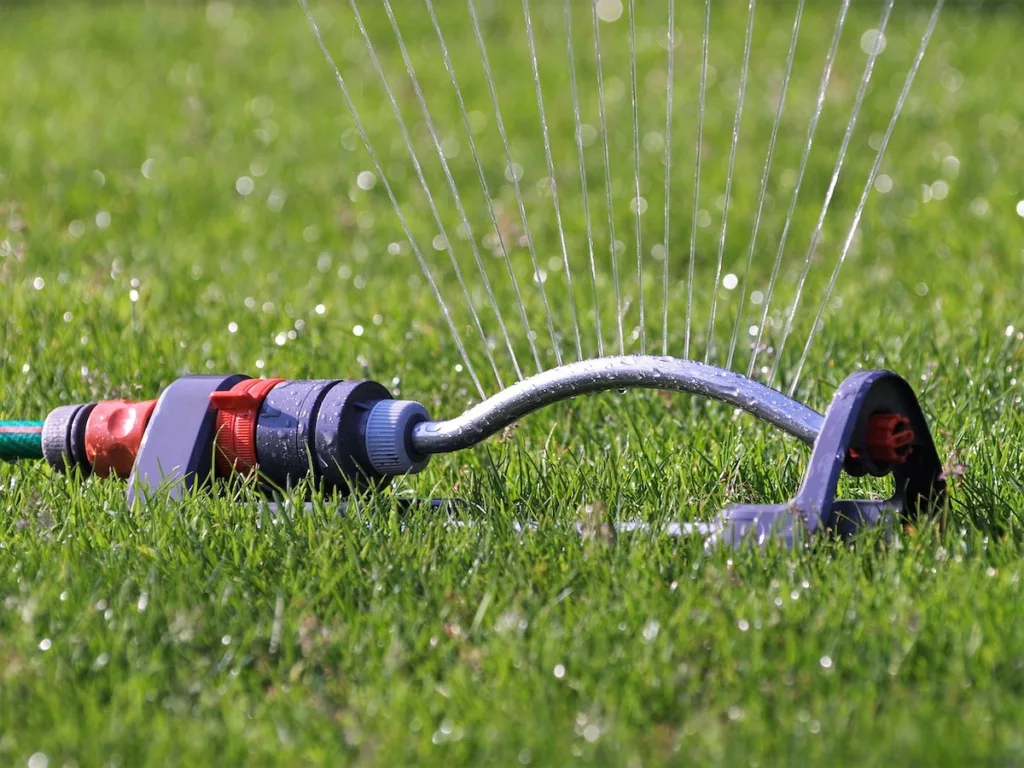
We’ll compare two such lawns below and you’ll see how the economics of the two types of lawn work out.
Ultimately, natural turf comes with a lifetime commitment to keep it looking pristine. Artificial turf has minimal commitment and the higher installation costs are offset by the lower cost of ownership that generally results in a return on investment within five years.
How is artificial grass sold and priced — and what else affects the overall cost?
Artificial grass is usually sold in 5-, 7-, 10- or 15-foot-wide rolls. The turf is priced per square foot.
If your space measures 20 feet by 50 feet, you’ll need a minimum of 1,000 square feet of artificial grass. Because most areas are not perfectly symmetrical, the rolls of turf must be cut and shaped, meaning that you will need to allow some extra footage for waste.
Trees, raised flower beds, pathways and other landscaping features usually impede perfect symmetry and this may add to the labor requirements and the overall costs.
It’s important to know what you’re paying for when assessing if it’s worth the money. Many other factors affect the overall cost of artificial turf installations:
- The type of turf you use: nylon, polyethylene and polypropylene are all used to manufacture artificial turf, varying in price and bringing different qualities to the grass area.
- Face weight: this is the weight of your turf excluding the backing and is a good indication of the quality/lushness/durability of the grass (higher face weights are better).
- Blade shape: artificial grass blades may have many different blade shapes that also affect the quality and appearance of your grass.
- Backing, infill and base materials: the material that goes on top of and under artificial turf also affects the overall quality of the installation.
- Intended usage: a different quality of turf is advisable for heavy use (like a kid’s play area or dog run) compared to a rarely used front lawn.

- Area size: of course, the larger the area, the higher the cost of the turf and the installation.
- Area shape/location: the shape and accessibility of the installation area affect the labor costs.
- Drainage requirements: if extra drainage provisions are required, this will also add to the overall installation cost.
- Operational costs: the costs of delivery and haulage of materials impact the overall cost of the project.
When you compare quotes between different suppliers, make sure that all suppliers provide the total cost for installations — not just the raw artificial turf — because it’s not a DIY job. Installation requires specialist skills.
How do real grass and artificial grass costs compare over 20 years?
Most high-quality, professionally installed artificial grass areas in Dallas-Fort Worth can last a couple of decades or more.
So., let’s consider again the comparative costs of a 1,000-square-foot lawn over 20 years.
Artificial grass care and maintenance (20 years):
- Installation: $10,000
- Brushing: $150/year
- Infill replenishing: $100/year
Total Annual Costs: $250
Total costs over 20 years: $15,000
Real grass care and maintenance (20 years):
- Installation: $2,000
- Mowing/edging: $650/year ($25 every two weeks)
- Watering: $600/year
- Leaf and debris clearance: $175/year
- Spring/fall cleanup: $75
- Fertilizing: $75/year
- Aeration: $75/year
- Weedkilling: $40/year
Total Annual Costs: $1,690
Total costs over 20 years: $35,800

You can see how the true estimated costs (rather than just the upfront costs) compare between real grass and artificial grass over 20 years.
Well over $1,000 a year can be saved on lawn maintenance when switching to synthetic grass. Even if you don’t hire an expensive lawn maintenance or gardening service, you need to pay for water, fertilizers, pesticides, weedkillers, gardening tools and machinery, etc. Not with artificial grass!
After a few years of installation, the lines cross and then, for the rest of its long life, artificial grass proves considerably more cost-effective than real grass.
Increased home value
If we’re asking whether artificial grass is worth the money, we should also consider its effect on a home’s value — especially in water-starved areas of the country.
An artificial lawn looks good regardless of the time of year, pets, climate or how much maintenance you do. For its curb appeal alone, it’s generally considered to increase home value.

But homeowners in the Dallas-Fort Worth area have been hit with water restrictions more recently, making artificial grass even more highly sought by home buyers. Artificial lawns, synthetic backyard putting greens, entertainment areas, swimming pool areas and kids’ play areas can add thousands of dollars to the value of a home.
The economic benefits of artificial grass are clear even before we start to consider the water-saving and environmental benefits. Let’s take a closer look at these now…
What are the non-economic benefits of artificial grass?
Many homeowners look beyond the economic benefits of artificial grass to its longer-term benefits — with good reason.
The main benefits are as follows:
Water conservation
The average American home uses 320 gallons of water per day. For some homeowners in the DFW area, the water conservation benefits alone mean artificial grass is worth the money.
Texas is one of the leading drought states in the country. The entire North Texas area suffers badly and Dallas, Fort Worth, Arlington and Irving have all introduced a twice-weekly watering schedule for residents.
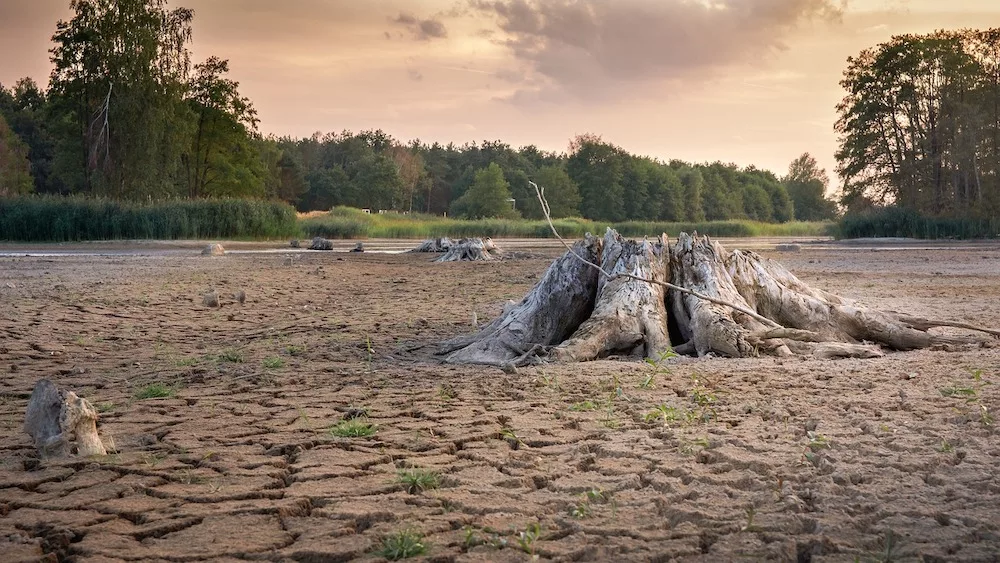
An artificial lawn drastically reduces water usage. A real grass lawn measuring 1,000 square feet in area requires around 620 gallons every watering, The same area of artificial grass requires less than 80 gallons to rinse it down now and again — not every week like a real grass lawn.
About one-third of residential water usage nationwide is used for lawn irrigation. That’s no longer sustainable in the DFW area and increasing water restrictions are a major reason for many local homes to make the switch to synthetic grass.
Other environmental benefits
Artificial grass needs no mowing, trimming, fertilizing or pesticides — and any weedkillers you may need can be homemade, natural mixtures. This means less toxicity seeping into the groundwater and rivers, which is better for the environment.
The absence of lawnmowers and trimmers saves more fuel than you probably imagine. They are major contributors to climate change according to the EPA, emitting as many pollutants as cars and homes! Homeowners even waste 17 million gallons of gasoline each year by spilling it when refueling lawn equipment.
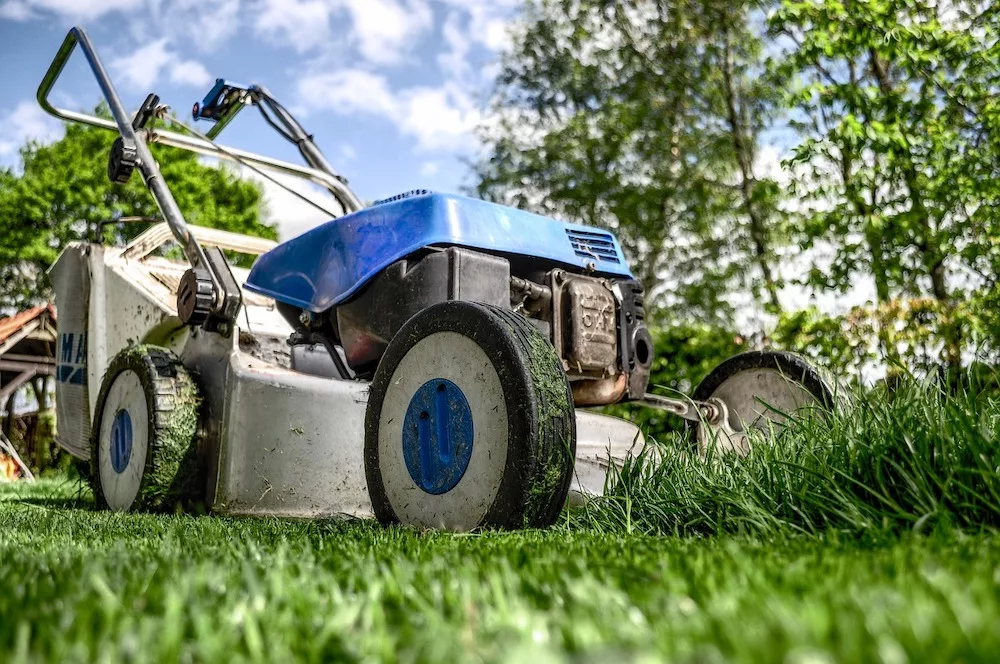
Synthetic grass is a petroleum-based product but after the initial installation, it’s better for the environment than natural grass — and this continues for many years.
It looks and feels more like real grass now
If you haven’t considered artificial grass in recent years, you may be out of touch with how realistic it looks and feels these days.
The advance in technology means that the old PVC-based fake grass that was spiky and shiny (1970s-style grass) is long gone. We now have access to a huge range of high-quality, lifelike artificial grass that perfectly mimics the beauty of real grass and feels increasingly like it too.
With professional installation, the right infill and proper drainage, artificial turf is almost indistinguishable from the real thing.

The designs are constantly being improved too — and many synthetic turf products are perfect for the Dallas-Fort Worth conditions.
Durability, versatility and longevity
Provided you choose a good quality artificial turf installed by professionals, your area will look pristine for 15-20 years or more with just a little care and attention.
Artificial turf is durable and adaptable, suiting spaces where real grass cannot go — even on balconies and over concrete. It needs no sunshine or rainfall to flourish and is equally at home by a swimming pool or on a sports field, putting green or sprawling front yard lawn.
Frees up time
Do you love being out in the garden on evenings and weekends tending to your lawn? If so, artificial grass may not be for you.
But for many homeowners, yardwork is a chore. Unless you put the hours in or spend hundreds or even thousands of dollars per year on lawn maintenance services, you’ll soon have an overgrown mess to contend with:

As mentioned, average U.S. homeowners spend almost 72 hours a year caring for their lawns. With artificial grass, this is reduced to a few hours — and it will look fantastic all year with virtually no effort. This frees up time at weekends and evenings to do the things you’d rather do.
Pet-friendliness
You can wave goodbye to your dog digging for bones, muddy paws trailing through the house and yellow patches from pee if you switch to artificial grass.
Your backyard will be transformed into a low-maintenance, pet-friendly, child-friendly area quite easily with the right installation professionals. A few extra antimicrobial and drainage measures with pet turf mean that the area will remain safe and hygienic even if your dog pees on your artificial lawn.

When is artificial grass NOT worth the cost?
Even in drought-stricken areas of Texas, artificial grass is not for every homeowner. It may not be the right solution for you if:
- The upfront costs are prohibitive (on average, 5-10 times the cost of installing natural grass sod)
- You love lawn maintenance and yard work: if aerating, fertilizing and mowing is your idea of fun, you’ll not want to give that up easily.
- You’re considering selling your home: artificial grass lawns can increase curb appeal and the value of a home but if you’ll be moving out soon, you might want to hold off.
- You intend to DIY: unless you have experience installing artificial grass, you should leave it to the professionals. Many things can go wrong when installing artificial grass.
FAQs
How much maintenance is needed with artificial grass?
Synthetic turf is not quite maintenance-free but is very low maintenance. Removing debris and dirt from the area is important, especially after a storm. You should also brush the artificial grass against the direction of the blades to keep it looking plush. An occasional rinse down with water will also help remove dust and finer debris and the infill may need replenishing annually. Besides this, not much else is needed with synthetic turf maintenance.
How does artificial grass drain?
When the DFW Turf Solutions team installs artificial grass, we assess the drainage situation and may adapt the installation to accommodate special drainage requirements. All of the grass we install is well suited to the DFW climate and drains well even in very wet periods because of its permeable design and the layer of road base underneath.
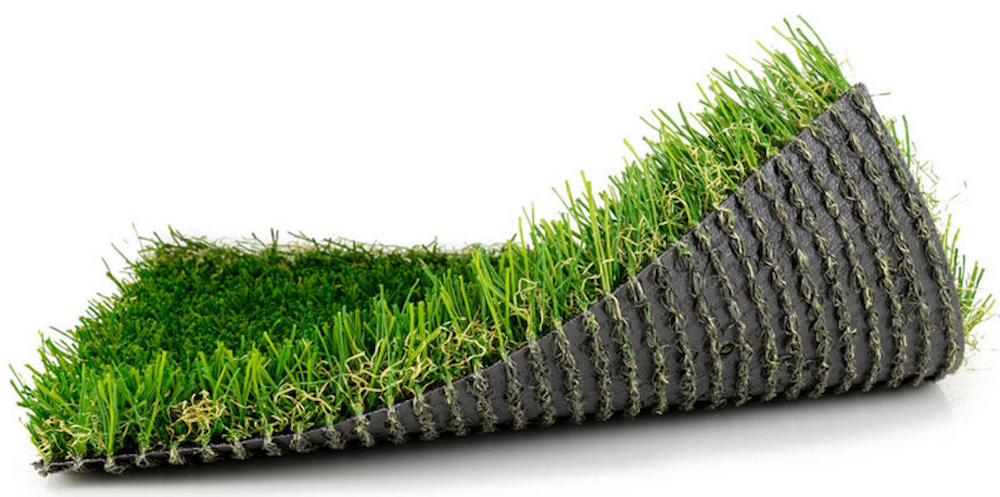
Do your quotations include installation costs?
Yes, DFW Turf Solutions quotations are for fully installed artificial turf — there are no hidden costs.
Install artificial turf that’s worth the money…
If you install a high-quality artificial grass lawn, putting green, pet area, play area or pool area, it’s worth the money in the long run — providing it’s installed properly.
The economic benefits come from its longevity and lack of maintenance. You’ll save money every year compared with natural grass. There are other important benefits like water conservation, environmental benefits and more free time.
All in all, this increasingly makes artificial grass attractive for homeowners. The DFW Turf Solutions team has been installing high-quality artificial turf in Dallas-Fort Worth since 2014. Reach out to our helpful team by calling 940.365.9165 and we’ll be happy to provide a quote.


